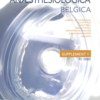Does High Flow Nasal Cannula avoid intubation and improve the mortality of adult patients in acute respiratory failure in the intensive care setting, when compared to others methods as Conventional Oxygen Therapy or Non-Invasive Ventilation? A narrative review
High flow nasal cannula, oxygen therapy, acute respiratory failure, non-invasive ventilation, intensive care unit
Published online: Mar 21 2023
Abstract
High-flow oxygen therapy via nasal cannula (HFNC) has been used for many years to oxygenate patients in respiratory failure. However, scientific data in literature are divergent about its value to prevent invasive mechanical ventilation and mortality. The use of HFNC has increased following the COVID-19 pandemic. Our review considers the impact of HFNC on intubation rates and mortality compared with conventional oxygen therapy (COT) and noninvasive ventilation (NIV). HFNC would decrease the use of invasive mechanical ventilation compared to COT and would be equivalent to NIV. Combination of NIV and HFNC would have a benefit compared to NIV alone. Some etiologies of respiratory failure would benefit more from this technique as post-extubation critical ill patient or COVID-19 pneumonia. HFNC seems to reduce mortality in COVID-19 patients compared to NIV.
Several clinical studies are needed to refine the indications of this technique.
